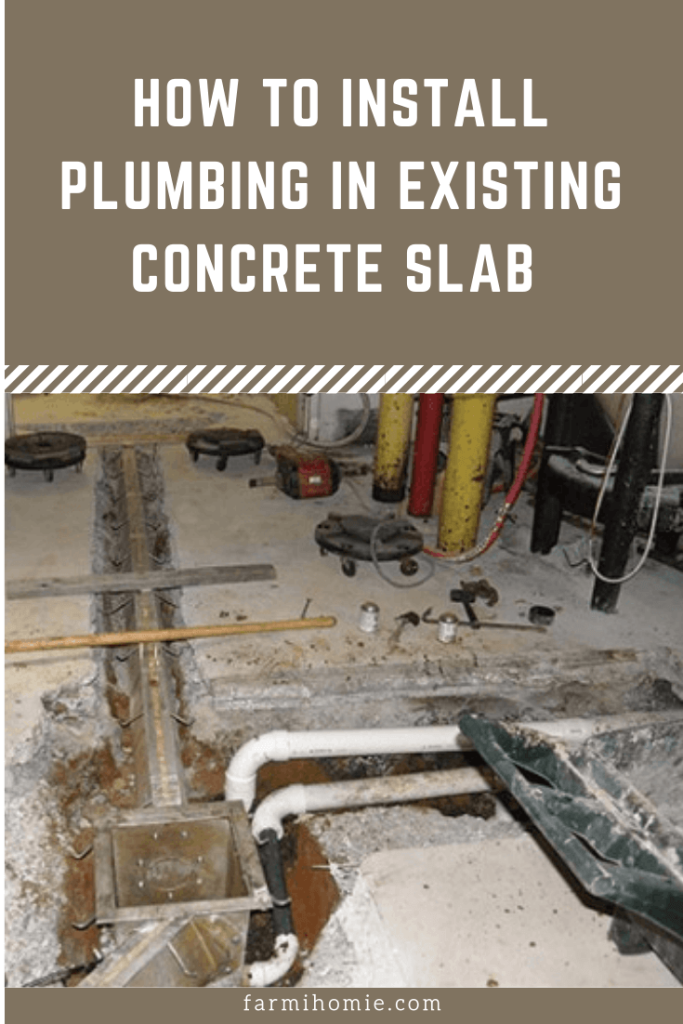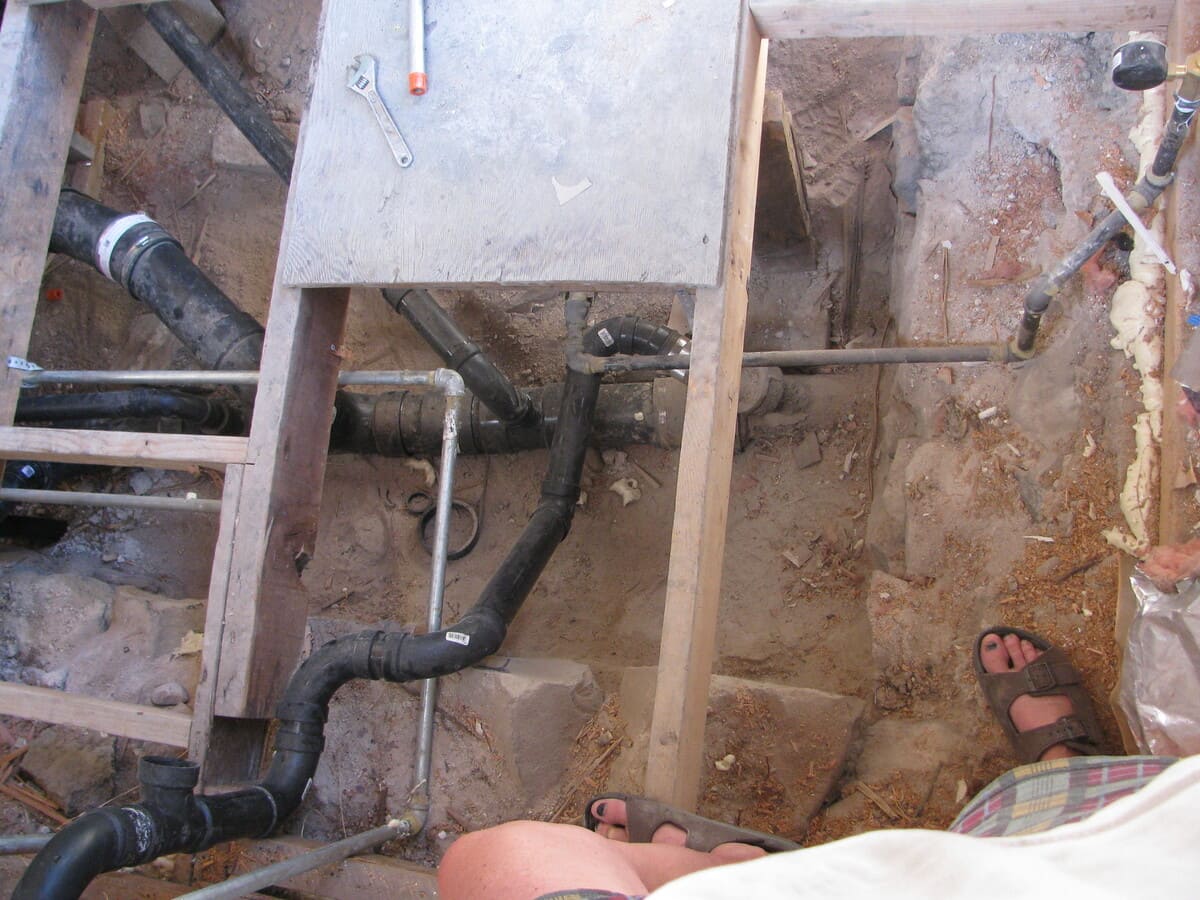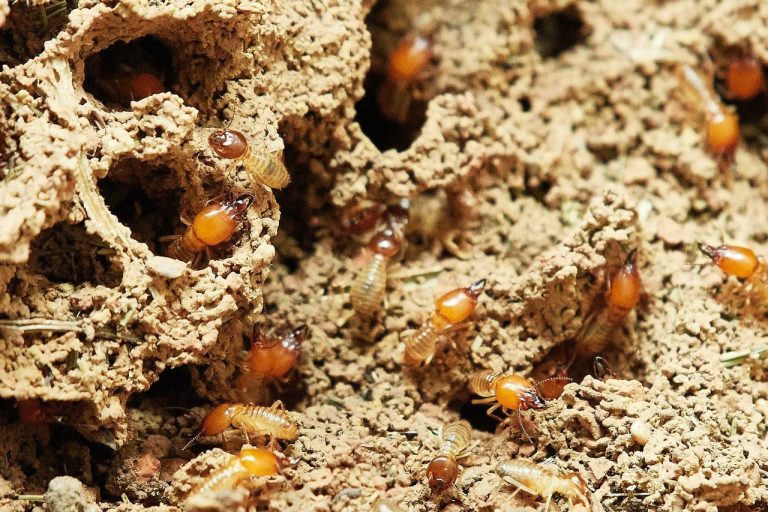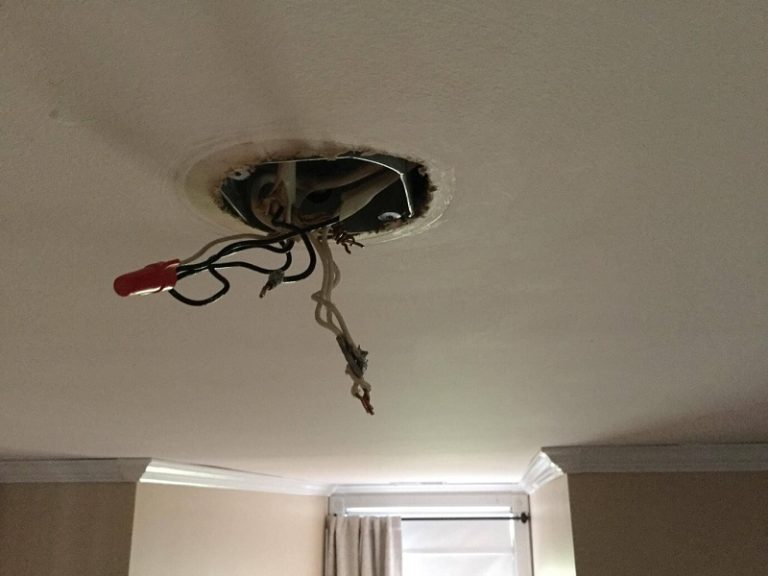How to Install Plumbing in Existing Concrete Slab
Do you need a quick, easy, and precise guide on how to install plumbing in existing concrete slabs? Well, let me be honest with you. It is going to be tough. There will be a sawing, digging and a lot of dust to start with.
Hiring a professional plumber seems to be a legit solution. But once you request estimates, you might start to question yourself “why are plumbers so expensive?”. Been there, done that. Should you keep living with the inadequate existing plumbing? Obviously, no. With a lot of practice and even more mistakes on my sleeve, I can help you with a quick and precise guide!
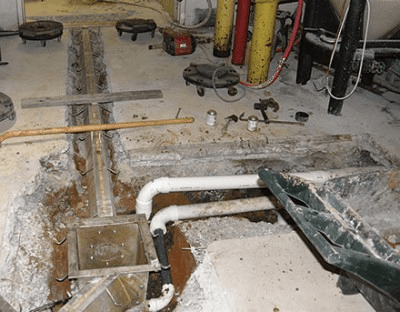
What You Will Need To Follow This Tutorial?
The most important step is to gather the supplies. Having the right tools at your disposal can make this DIY task significantly easier. Here is a list of all the tools and equipment you will need.
- Measuring tape
- Spray paint
For those who don’t have spray paint or don’t want to buy it, you can use white chalk. I prefer spray paint because it is more likely to stay and easy to spot.
- Wet Concrete Saw
You can also use circular saws or concrete blades instead of concrete saws. I would suggest renting a walk-behind concrete wet saw, fitted with a diamond blade. That’s because it will significantly reduce the amount of airborne concrete dust. And it will make it quick!
- Respirator mask
- Protective eyewear
- Back support
- Sledge hammer
- Demolition hammer
Keep this for the exceptionally difficult patches of the concrete. Otherwise, a sledgehammer is good enough to dig through the concrete slab.
- Accurately measured plumbing pipes
- Pipe joints
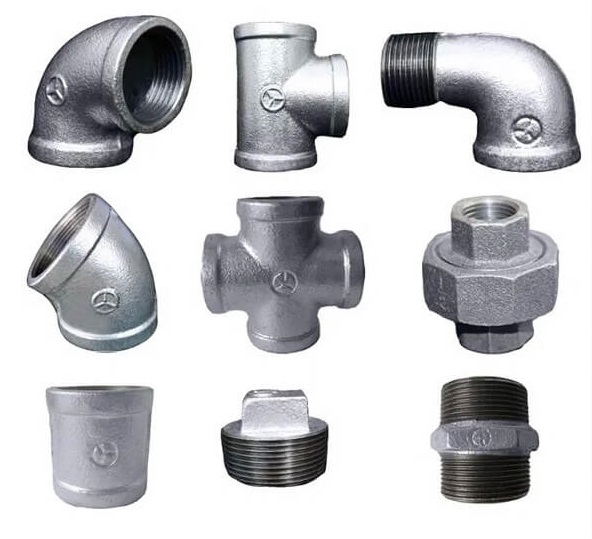
- Tape
- Hand shovel
A mechanical digger is a good alternative to a hand shovel because of its efficiency.
- Concrete mixture
Step By Step Instructions
Step 1: Take The Measurements And Purchase The Pipe
You will need drawings of your building to take the measurements. Pay close attention to the measurements written and use a measuring tape to map out the location of each pipe beneath the concrete slab. Mark the lines with spray paint or chalks. Determine the length of pipe you will need at this step. Purchase pipes of the same material and quality as the existing pipes.
Pro Tip: Precision at this step would save you from a lot of costly mistakes. Make sure you know exactly where the existing pipes are located.
Step 2: Mark The Cut
Keep in mind that drain lines should be in their simplest configuration and there should be minimum twists and turns in it. Determine the center of the new line at its origin point and where it would end. Mark the center as X with spray paint and now draw two lines on either side to form a complete mark.
Pro Tip: Pipes should never be installed horizontally through a concrete slab. It should run vertically through the slab support to allow subsequent connections to be made effectively.
Step 3: Cut The Concrete
Now it’s time to do some mechanical work. Place the diamond blade on the wet concrete saw on the X, the center of the drain line. Cut about 4 1/2 inches deep and proceed to cut along both the marked lines between the point of origin and endpoint. This step could be pretty noisy and time-consuming. You may need to take breaks. If there is a lot of steel reinforcement in the concrete slabs, be prepared for spending extra time and putting in more effort.
Once both the lines have been cut, use a sledge hammer and demolition hammer (if required), to break the concrete strip into chunks. Remove the remaining pieces of concrete and you may need to dig the sand or soil to make a drain trench. A mechanical digger comes in handy.
Pro Tip: Make sure you are wearing appropriate safety equipment, appropriate back support and protective eyewear to prevent yourself from unexpected injuries. And get rid of the concrete junk before bringing in the new pipes.
Step 4: Install The Pipes
Install the pipe in the drain trench. Make sure the pipe rests on adequate pipe support which is specified in the building drawing. Where pipe must pass through the slab, make the vertical connections. The tubes should extend a minimum of 6 inches above the top of the concrete slab. If a twist or turn is inevitable, make sure a high-quality pipe joint of adequate shape is installed.
Pro Tip: Marking and measuring beforehand saves you from making last-minute purchases.
Step 5: Cover The Pipe Mouths
After securing the pipes in place, cover the pipe mouths with tape. This helps prevent the debris from entering the pipe. Otherwise with hidden debris can cause blockage in the pipe even before you have poured concrete over it. If that happens, you will have to break the pipes to assess where the blockage is and that’s what we don’t want.
Step 6: Fill The Trench With Soil And Concrete
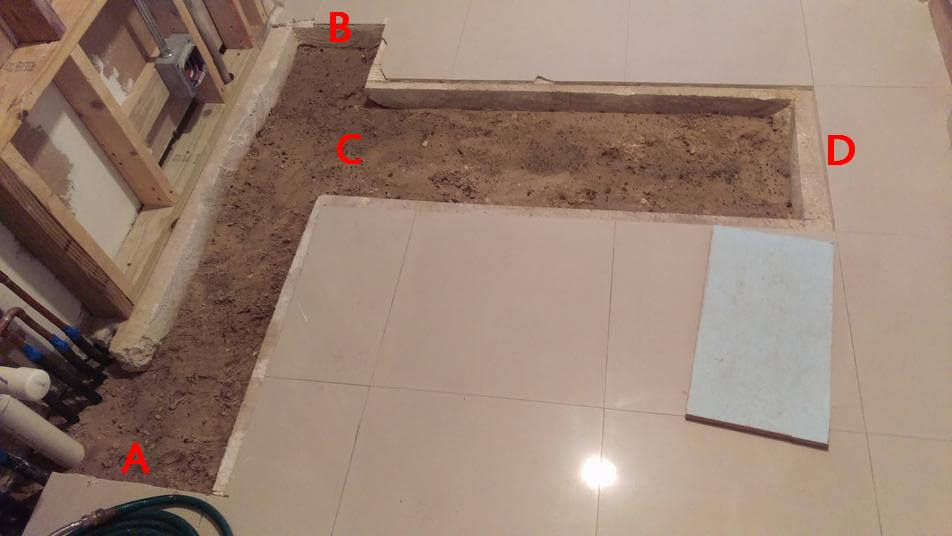
It’s time to cover the pipelines with soil. Use a hand shovel to fill the trench so that the backfill is even with the floor. When the drain is higher than the existing floor, you will have to level up the entire floor. That’s going to take a lot more effort and time.
Pour the concrete over the soil and let it sit for the recommended times. You are done with it!
- If you are searching for a decent service, take a look at Mourad Plumbing
FAQs
How do you install a drain in an existing concrete floor?
Installation of a floor drain into an existing concrete floor will require some sawing and digging of the concrete. You can hire professional sewer and drain services to do the work for you as it involves heavy equipment and lots of dust. For those who want to do it on their own, cut the concrete using a wet saw concrete. Dig the trench and install the new pipes according to the markings. Level it with soil before pouring it into the concrete.
Can you move plumbing on a concrete slab?
Yes, you can. But it is a time-consuming and messy job and requires a lot more mechanical precision than installing new plumbing in a concrete slab. If you are considering professional services for a 200 square foot kitchen, it can cost anywhere between $2,000 to $7,000. Doing it on your own involves careful sawing and digging of the concrete slab to avoid breaking the pipe. Once you have removed the pipes, make another cut for the new drain line. Install the pipes and level up the floor.
Maybe you are interested in What is the Best Caulk For Kitchen Sink in 2021?
How hard is it to add a bathroom to a house on a slab?

To be honest, it is pretty hard but not impossible. To add a bathroom to a house on a concrete slab, the first step is to locate the existing water supply and waste lines. Mark them if necessary. Now map out the new pipelines you need to install. Cut and remove the concrete slabs to remove the portion of the slab necessary to install the plumbing supply and drain lines. Once the pipes are installed, pour the new concrete over it and level the floor.
Read more: A Beginner’s Guide to Best Bathroom Exhaust Fans With Light And Heater
How deep are plumbing pipes under a slab house?
The plumbing pipes are about 18 inches to 3 feet deep under a slab house. They are buried below the frost line in general but at the points where they come above the frost line, they are properly insulated to prevent damages. On the outside, the pipes are about four feet below the ground. Rising them above 4 feet can cause them to freeze and subsequently burst in winters.
Can you run water pipes in a concrete floor?
Yes, you can run water pipes in a concrete floor. They can also run under sidewalks, stoops, patios and decks. But here is an important point to remember, the pipes generally run in the dirt beneath the concrete, not the actual concrete. At points where pipes have to be passed through concrete, trenches are made before passing the pipes. It is then covered and leveled with concrete.
